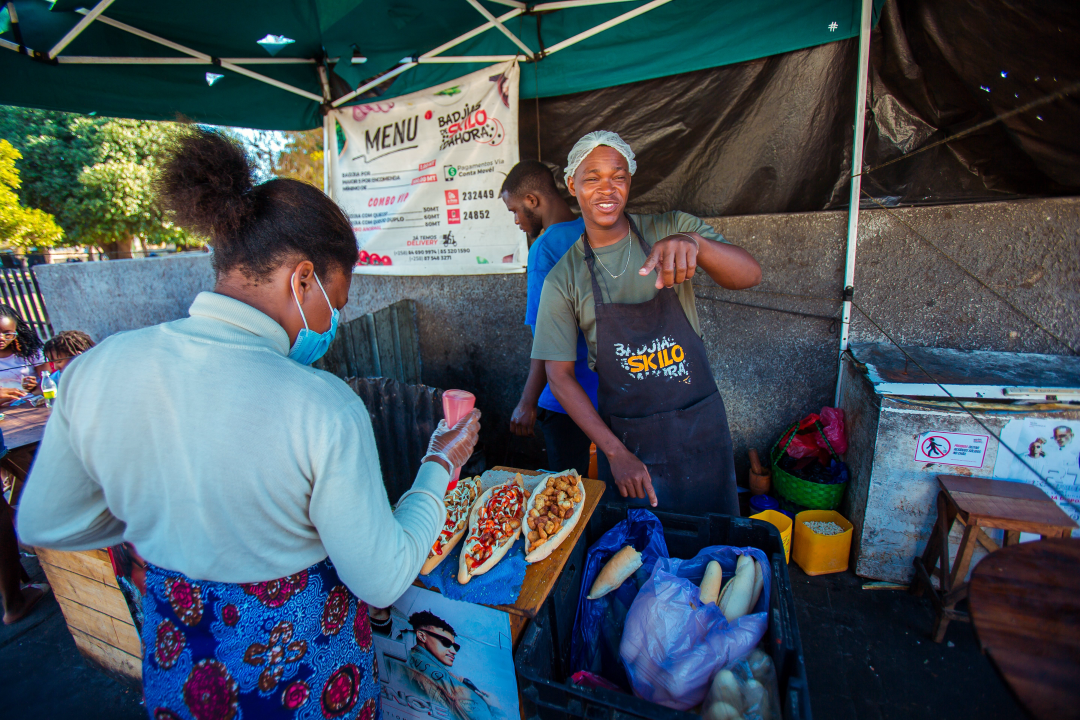Challenge statement
Challenge type: If you are working on multiple challenges, please indicate if this is your "big bet" or "exploratory" challenge.
Please note: we ask you to only submit a maximum of 3 challenges - 1x Big Bet, 2x Exploratory. Each challenge must be submitted individually.
EXPLORATORY
Challenge statement: What is your challenge? (Please answer in specific terms: "Our challenge is that...”.)
Our challenge is that there is a disconnect between the skills and aspirations of youth and the opportunities available in the job market, compounded by limited access to quality vocational training, entrepreneurial resources, and systemic support for integrating youth into sustainable employment pathways. This is further exacerbated by gender inequalities and the informal sector's lack of structure, which hinders long-term growth and stability for young workers.
Background: What is the history of your challenge? What is causing or driving it? Who is involved? How does the current situation look like? What undesired effects does it produce?
Background:
The challenge of youth employability in Mozambique has deep roots tied to systemic issues in education, economic policy, and labor market structures. Historically, the mismatch between educational outcomes and market needs has left many young people ill-equipped for available job opportunities. This is further driven by:
Limited Vocational Training: Few accessible and relevant programs align with the skills demanded by the market.
Informal Economy Dominance: A significant portion of youth works in the informal sector, which lacks stability, growth opportunities, and protections.
Gender Inequality: Women face additional barriers due to cultural norms and limited access to resources, training, and opportunities.
Weak Linkages: Minimal collaboration between academia, private sector, and government leads to fragmented initiatives and duplication of efforts.
Who is involved?
Key stakeholders include youth themselves, government bodies (e.g., SEJE), NGOs, international organizations (e.g., UNDP, MUVA), private sector employers, and academia.
Current Situation:
Youth unemployment and underemployment remain high, with many young people resorting to informal jobs for survival. This situation limits their earning potential, social mobility, and contribution to the economy. Rural areas, in particular, face compounded challenges due to limited infrastructure and fewer opportunities.
Undesired Effects:
High levels of frustration and disillusionment among youth.
Increased vulnerability to poverty and social instability.
Missed opportunities for economic growth as the potential of young people remains untapped.
Gender disparities continue to widen, leaving women further marginalized.
Quantitative evidence: What (official) data sources do you have on this challenge that better exemplifies the importance and urgency of this frontier challenge? You can add text, a link, or a picture.
Youth Unemployment Rate:
The youth unemployment rate in Mozambique is estimated at 17.6%, significantly higher than the national average, reflecting the struggles young people face in finding jobs (ILO, 2023).
Informal Sector Employment:
Approximately 80% of the workforce operates in the informal sector, with young people disproportionately represented. This indicates a lack of structured career opportunities and social protections (World Bank, 2023).
Gender Inequality:
Women account for 60% of the informal sector workforce but earn 20–30% less than men on average, illustrating the compounding challenges of gender inequality and informality (UN Women, 2023).
Educational Mismatch:
A survey by the Ministry of Education and Human Development (2022) found that 35% of graduates lack the skills needed for the job market, underscoring the gap between training and market demands.
Vocational Training Reach:
Only 25% of youth have access to any form of vocational training, leaving the majority without skills aligned to job opportunities in sectors like green energy, ICT, or agribusiness (UNDP, 2024).
Economic Growth and Youth:
With over 65% of Mozambique’s population under 25 years old, youth represent a vast potential for economic growth. However, 50% of youth report being underemployed or in vulnerable work conditions (INE, 2023).
Supporting Links:
ILO Mozambique Employment Report 2023
World Bank Mozambique Economic Update 2023
UNDP Mozambique Human Development Index 2024

Qualitative evidence: What weak signals have you recently spotted that characterizes its urgency? Please provide qualitative information that better exemplifies the importance and urgency of this frontier challenge. You can add text, a link, or a picture.
Youth Frustration and Aspirations:
During workshops, many youth expressed feelings of disillusionment about their future, citing the lack of pathways to decent employment despite having ambitions to contribute to society. One participant in Beira remarked, "We study, we work hard, but there are no jobs waiting for us. We feel forgotten."
This growing frustration can lead to social instability, migration, or disengagement from economic participation.
Informality Stigma:
Informal workers interviewed shared concerns about being seen as "second-class professionals." They highlighted how the lack of formal recognition affects their ability to grow, access financing, or secure better working conditions.
Gender Disparities:
Women reported additional challenges, such as cultural norms restricting their participation in technical fields or entrepreneurship. A female participant in Sofala shared, "We want to lead businesses, but we are not trusted or supported in the same way as men." This reflects the urgent need for tailored interventions to empower young women.
Digital Exclusion:
In rural areas, youth highlighted the lack of access to digital tools and training, leaving them unable to benefit from emerging opportunities in ICT and the digital economy. This creates a divide between urban and rural youth potential.

Value proposition: What added value or unique value proposition is your Accelerator Lab bringing to solving this challenge? Why is it your Lab that needs to work on this challenge and not other actors within UNDP, other stakeholders in the country respectively? Why is it worth investing resources to this challenge?
The Accelerator Lab brings a unique and transformative approach to addressing the youth employability challenge, differentiating itself through its focus on innovation, systems thinking, and community-driven solutions.
Systemic Thinking and Integration:
Unlike traditional interventions, the Accelerator Lab uses systems thinking to map interconnected challenges and avoid duplication of efforts. This approach ensures that interventions address root causes, such as skills gaps and informal sector barriers, rather than just symptoms.
Rapid Experimentation:
The Lab excels in designing and implementing low-cost, high-impact prototypes to test solutions quickly and gather insights. For example, in Beira, we piloted youth-led initiatives like green poultry farming and digital skills training for informal workers. These prototypes allow us to validate ideas before scaling them.
Youth-Centric Approach:
We directly engage youth as co-creators, ensuring that solutions are relevant, inclusive, and tailored to their aspirations. This participatory approach empowers youth to take ownership of their future, creating long-term impact.
Multi-Stakeholder Collaboration:
The Lab acts as a bridge between stakeholders, including government (e.g., SEJE), private sector, academia, and civil society. By fostering partnerships, we align resources and expertise to create sustainable, scalable solutions.
Data-Driven Insights:
Through our network, the Lab gathers real-time data and weak signals that provide a deeper understanding of emerging trends and challenges. This allows us to stay ahead of the curve and address issues proactively.
Focus on Innovation and Technology:
The Lab is uniquely positioned to leverage technology and digital tools to create pathways for youth in emerging sectors like ICT, green energy, and digital entrepreneurship.
Why the Accelerator Lab?
Other actors within UNDP and stakeholders have important roles but may lack the agile methodology and experimental mindset that the Lab provides. By working on this challenge, the Lab complements existing efforts, creating synergies that enhance impact and efficiency.
Why Invest Resources?
Demographic Dividend: With over 65% of Mozambique's population under 25, investing in youth employability now will shape the country's economic and social future.
Economic Potential: Transitioning informal workers to formal structures can significantly boost GDP, tax revenues, and overall stability.
Innovation as a Catalyst: The Lab’s approach ensures that resources are used effectively, driving innovation and scaling successful initiatives.
Short “tweet” summary: We would like to tweet what you are working on, can you summarize your challenge in a maximum of 280 characters?
"We're tackling the disconnect between youth skills & job market needs in Mozambique! Using innovation & collaboration, we're empowering youth with tools, training, & opportunities to thrive—bridging gaps in gender, informality, & digital inclusion. 🌍✨ #YouthEmployment #UNDP"
Learning questions
Learning question: What is your learning question for this challenge? What do you need to know or understand to work on your challenge statement?
Skills Gap: What specific skills are most in demand in Mozambique’s job market, especially in key sectors like agriculture, ICT, and green energy, and how can we tailor vocational training and education to meet these needs?
Barriers to Youth Employment: What are the key challenges that youth face when entering the workforce, especially those from informal sectors or marginalized groups? How can we effectively address issues such as lack of formal education, job market misalignment, and gender inequality?
Effective Transition from Informality to Formality: What strategies can help youth in the informal sector transition smoothly into the formal economy? How can registration and formalization processes be simplified and made more accessible?
Gender Inclusivity: How can we ensure that both young men and women have equal access to job opportunities, training programs, and entrepreneurial support, particularly in regions where gender disparities are more pronounced?
Partnership Models: How can we build stronger partnerships among government, private sector, academia, and civil society to create a holistic ecosystem for youth employment, and what role can each partner play in driving systemic change?
Innovation and Digital Solutions: How can we leverage technology and innovation to improve access to training, jobs, and entrepreneurial opportunities for youth, particularly in underserved regions?
To what stage(s) in the learning cycle does your learning question relate?
Sense, Explore, Test
Usage of methods: Relating to your choice above, how will you use your methods & tools for this learning question? What value do these add in answering your learning question?
Design Thinking-Ensures that we’re solving real problems faced by youth, making solutions practical and user-centric. It also helps to iterate quickly, incorporating insights from target users into the design process. This iterative approach allows for fine-tuning solutions before broader implementation.
Systems Mapping-Helps us understand the complexity of youth employment issues and reveals how different factors contribute to the challenges. By identifying key leverage points in the system, it guides us in designing interventions that address root causes rather than just symptoms.
Behavioral Insights-Help us address subconscious barriers and biases, nudging both youth and employers toward making decisions that lead to greater formalization and employment opportunities. It also supports the scaling of interventions by applying small, low-cost changes that have a high impact.
Prototyping-Rapid Prototyping allows us to test multiple solutions in a short period, ensuring that we can quickly identify what works and what doesn’t. This iterative process helps avoid costly mistakes in the later stages of implementation, while also making the solutions more adaptable to different contexts.
Co-Creation-This method fosters buy-in from all stakeholders and ensures that solutions are context-specific and relevant to the diverse needs of youth. By including employers and policymakers, we create solutions that are grounded in reality and have a higher chance of being adopted and scaled. The co-creation process also encourages innovation and shared responsibility.
Closing
Early leads to grow: Think about the possible grow phase for this challenge - who might benefit from your work on this challenge or who might be the champions in your country that you should inform or collaborate with early on to help you grow this challenge?
Youth Entrepreneurs and Informal Sector Workers-Youth working in the informal sector or aspiring to formalize their businesses.
Government Agencies-Government bodies responsible for youth employment.
Private Sector (SMEs, Startups, Corporations)-Employers in the formal sector, including SMEs, Startups, Large Corporations.
Youth-Focused NGOs and Civil Society Organizations (CSOs)-Organizations like MUVA, Youth associations, and other NGOs focused on youth empowerment.
Academia and Research Institutions-Universities and research organizations focused on economics, development studies, or labor market research.
Youth-Serving Media and Communication Outlets- Media outlets, influencers, and digital platforms targeting young people.
Financial Institutions (Banks, Microfinance, Digital Finance Providers)-Banks, microfinance institutions, and fintech companies providing financial services.
Local Government and Municipal Authorities- City and municipal governments with significant youth populations and informal sector activity.
END OF ACTION LEARNING PLAN: Thank you! The form saves automatically and your submission has been recorded. You may now exit this window.


 4Quality education
4Quality education

 5Gender equality
5Gender equality 8Decent work and economic growth
8Decent work and economic growth
Comments
Log in to add a comment or reply.